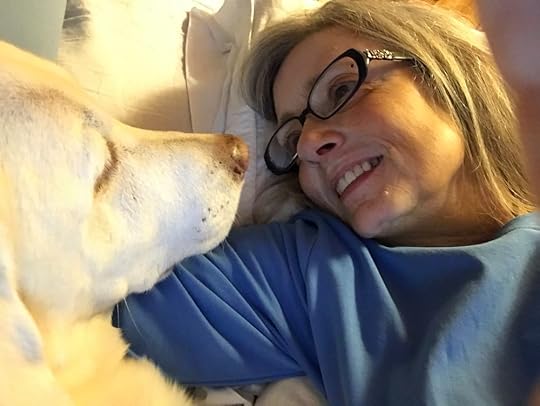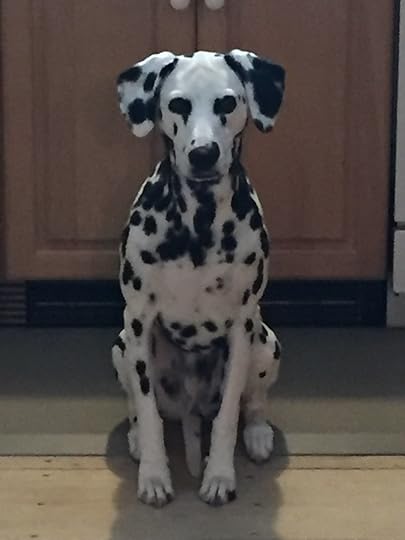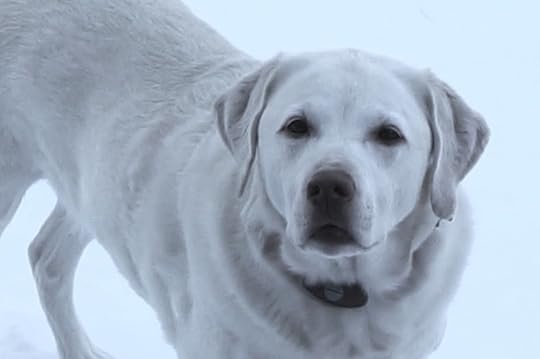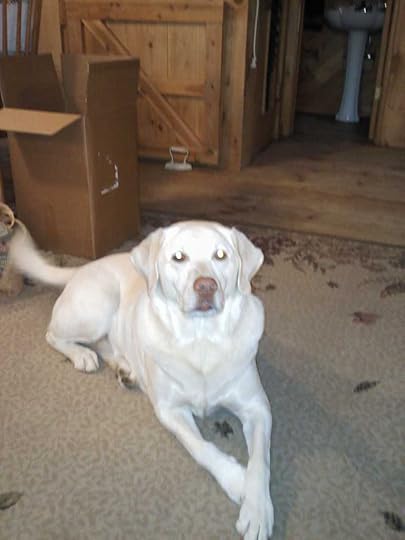Connie Bombaci's Blog, page 6
July 17, 2019
Safety for Dogs in Extreme Weather

Watching the screen on our weather station that is located in our front yard, my heart sinks thinking of all the animals who are outside in the rising temperatures. Too many are left unattended, provided with an insufficient supply of fresh, cool water, shade, or comfortable shelter, and chained to a tree or stake. Why do these people have a pet? Would they like to be chained for hours? Do they care about their dog who depends on them for the essentials of life which include real love and genuine care?
The following is a reprint of an article from FOX59 news. The additional requirements of the ordinance are good, but I would like to see them go farther. The consequences need to carry a bigger penalty that bite into the humans purse and personal comforts. Perhaps they should experience what they put their precious pets through. At the least, the pups need to be taken out of the home. Children are taken from unsafe environments, and we need to protect the ones without voices - we must be their voices and protectors.
“Indianapolis, Indiana has a new addition to the Indianapolis Animal Care and Treatment Ordinance that defines the extreme low and high temperatures at which point dog owners must bring their dog inside a temperature controlled facility.
The new rules were added to the Care and Treatment of Animals ordinance in September 2015, and this is the first summer they are in effect.
According to the ordinance, it is now required by law to provide your dog with shelter when the temperature reaches 80 degrees Fahrenheit, and you must bring your dog inside when it’s warmer than 90 degrees Fahrenheit.
The law also sets new requirements for tethering and enclosures. Here is a complete list of the improvements made to the ordinance, as provided by Friends of Indianapolis Dogs Outside (FIDO):
Shelter
Your dog must have access to:
A shelter constructed of solid wood or other weather resistant materials consisting of solid walls on all sides
A dry floor raised above the ground
A roof sloped away from the entrance to protect your dog from weather and extreme cold
Pen or Fenced Enclosure
Your dog must have adequate space for exercise when confined to a kennel, enclosure or pen which must be at least 100 square feet (for example: 10ft. x 10ft.)
Any dog over 80 pounds must be provided with a space of 150 square feet
For each additional dog inside the enclosure, an extra 50 square feet must be provided
Tethering
It is against the law to tether (chain) your dog if any of the following is true:
Your dog is less than 6 months old
Your dog is sick or injured
It is between 11 p.m. and 6 a.m.
Your dog is not spayed or neutered, unless you are an adult, your dog is in your visual range, and you are outside with your dog
Extreme Weather
Your dog must be brought inside a temperature controlled building, such as your house when:
The temperature outside is 20°F & below
The temperature outside is 90°F & above
There’s a heat advisory
There’s a windchill warning
A tornado warning has been issued
Shade
On any day where the temperature is at or above 80°F, your dog’s shelter must be shaded by either trees or a tarp.
"The new ordinance does not prohibit people from walking their dog or letting their dog outside to relieve themselves. The new ordinance is targeted at situations where dogs are otherwise living in extreme temperatures 24/7 or close to it," said Darcie Kurtz of FIDO.
A person who violates any part of this ordinance will receive a $25 fine for the first violation, and a $200 fine for the second or subsequent violations. Additionally, a court may decide to take the dog away from the pet owner.
According to the Humane Society of Indianapolis, unlike humans, dogs are only able to perspire around their paws which is not enough to keep their body cool.
Some signs of heat stroke are: panting, staring, anxious expression, refusal to obey commands, warm, dry skin, high fever, rapid heartbeat, vomiting, and collapse. If your dog experiences any of these symptoms, call a veterinarian immediately and lower the animal’s body temperature by applying towels soaked in cool water to the hairless areas of the body.”
June 5, 2019
Fact vs. Fiction in Using CBD Oil

Our deaf dog, Judea, is a candidate for CBD as she ages and her joints begin to ache.
iHeartdogs.com is an excellent source of information regarding our furry, four-legged family members. Their emails offer facts that help us sort things out or helpful tips when caring for our precious and beloved dogs.
I began taking CBD oil myself and found it to be a wonderful source of pain reduction. To help you determine whether or not to consider using it with your pup, I am sharing iHeart’s latest posting.
“Are CBD sellers [truthful]...?”“We get it, there's A LOT of talk going around the internet and by word of mouth about CBD – and therefore it can be hard to tell what's real.”
“There are indeed lies that some are spreading about CBD oil, and we want to address some of the most common:”
[Myth] #1 – CBD Will Cure Anything That Ails My Dog“We recommend referencing research and testimonials from pet owners to learn about what issues CBD can help. Studies have shown that CBD can help dogs with epilepsy and osteoarthritis.”
“Dog parents report many other benefits, including a reduction in anxiety and pain.”
[Myth] #2 – CBD Is Illegal In My US State“Unfortunately, many people confuse hemp with marijuana – they are two related but different plants. Hemp, with all its many uses, is the plant from which CBD is sourced and is legal in all 50 states. In fact, hemp has been a cash crop in the US for centuries!”
[Myth #3] – CBD Is Psychoactive & Will Make My Dog “High”“This [misconception] stems from the confusion between hemp and marijuana. It’s the THC in marijuana that gives people a high. CBD oil from hemp, however, contains less than 0.3% THC.”
“This trace amount of THC can be removed, which is best for pets – though we only know of one CBD oil that does this, and that's Cannanine™ Organic Hemp Oil with CBD!”
CBD for the Fourth!The Fourth of July is a sad day at shelters because they are overrun with confused dogs that have bolted from their homes as a result of the terrifying explosions in the sky.
CBD oil can calm and relax your dog so the fireworks don't have such a negative effect. “
May 29, 2019
Salt Water Deadly to our Dogs
I am always trying to find information that will help us take better care of our precious animals. This news report was a real eye opener.
“Dog dies days after day at the beach”
Posted July 14, 2018
News Fox 29
TAMPA (FOX 13) - A Bay Area veterinarian is issuing a warning to pet owners after a dog accidentally died from saltwater poisoning.
Chris Taylor says he had no idea a swim at the beach with his dog would put his black lab in the hospital, but as the vet explains, dogs can easily get salt water confused for fresh water.
He had such a vibrant spirit," Taylor said. "If there was a tennis ball and a stick in a big body of water that's what he would love to do most."
Taylor is struggling to come to grips with the death of his 6-year-old black lab, O.G., who died accidentally after swallowing too much salt water at the beach.
"Towards the end of the evening, he was obviously tired and little wobbly after a long day at the beach," Taylor said. "We took him to the car. He had a little bit of diarrhea he didn't feel that well."
That was Monday. The next day, Taylor says O.G. seemed to be feeling better but by Wednesday he stopped eating and even stopped responding when Taylor would call his name.
He rushed him to the animal hospital but, shortly after arriving, O.G.'s brain started swelling. O.G.'s body stopped responding to the medicine.
Taylor says he was forced to put his loyal companion down.
"It still feels surreal," Taylor said. "It doesn't feel like reality. I [have] to get a grip on that and realize that it is real and he's gone."
It's a tragedy Taylor says no dog owner should ever have to go through.
Veterinarian Dr. Melissa Webster explained saltwater poisoning is tough to spot because every dog reacts differently.
"When I brought my puppy to the beach for the first time, I was literally there for only 10 minutes," Dr. Webster said. "He was drinking it like it was water in the pool. So for him, 10 minutes was more than enough."
"Even though we had fresh water and he was drinking that and we took breaks," Taylor said. "Accidents can still happen."
Dr. Webster says next time you take your dog to the beach, make sure you have plenty of fresh water. If your dog starts to experience diarrhea or vomiting, it could be a sign of saltwater poisoning.
If that happens, be sure to call your vet as soon as possible.
May 2, 2019
Beginning Life with a Deaf Dog
Responding to folks who inquire, “How do I get started?”
Hello!
I am so very glad to hear from you. There is so much to say about loving and living with a deaf pup that I can only begin here. What I know for absolute certainty is that I would not trade my life with my deaf pups for anything in the world!
The best advice I can give anyone with a deaf pup, child, friend, or relative is to establish a solid method of communication. Communication is the key to success. I didn’t know American Sign Language (ASL) prior to adopting my Hogan so my husband purchased a pocket-sized book for me to use. I decided to use ASL because I know many folks who know at least a bit of sign. I didn’t have to “reinvent the wheel” so to speak. Additionally, when I had to leave my pups with a sitter or the vet, I merely had to give them the handbook or copies of the most important signs that I use. This made it possible for many other people to “talk” with my pups without a great deal of instruction which could be vital in sudden situations! Most importantly, my pups were never left in a totally "silent" environment; someone could always talk to them.

Our book is used a great deal and shows the use since we adopted Hogan in 1993.
I also adopted a deaf female Dalmatian named Georgia; and both Hogan, Georgia, and my hearing black lab, India, understood many signs and short sentences. I used close to 100 signs with them but listed a few more than 70 signs that I was confident that they understood and clearly responded. It was wonderful. They loved my signing to them, and folks could actually see them watching my hands and face for messages. They became very intent.
I started through simple repetition. "Sit" is great to start along with "cookie." Once your pup puts together cookie and the reward, you will be off and running! Keep it simple and always use a sign for what you want.
Deaf pups are smart and they are very capable of learning. Because dogs are physical in nature, they naturally watch for signals and body language.
I even taught them the sign for "car" since they loved to ride in the car. When I told them that we were embarking on a road trip, they ran for the door. "Kiss" was fun and going for a "walk" met with joy-filled approval. "Potty" (I used the sign for toilet which is simply the letter "T") is great. I signed it every time I took them out to go potty, and they knew I meant business, especially if it was late and I wanted to go to "bed."
Repetition was how I trained my pups to understand any of the signs. Instead of using the spoken word, I simply used the sign for the word and followed it with having them do what I wanted or needed them to do.
Always be gentle, patient, and very positive.
Reward, never punish. The more you reward, the more the pup will respond. I did all my training with positive reward and reinforcement.
Socialization is also extremely important and must never stop. It must be continuous. Let others give treats which will make meeting other people a wonderful experience for your pup.
Desensitization to scary situations, such as being startled or awakened suddenly, is also critical and needs to be done slowly, carefully, and patiently.
Praise is crucial; touch is essential; and massage works wonders.
AND . . . remember that a tired dog is a good dog!
Our deaf animals can be wonderful and loving members of our families if we remember they have some special needs.

“I love you”
April 16, 2019
Essential Oils and our Dogs

Judea and her bed are on the floor where substances accumulate.
I love using fragrances in my home but must admit that I never gave much thought about the effects that these smells might be having on my precious dogs.
While surfing the internet, an article popped up and caused me great alarm. The candles, home fragrances, and essential oils that I have been using may be harming my beloved dogs who I want to take the very best care of and protect them. To think that I could be doing something that would hurt them was - is- completely unacceptable.
Because of this concern, I did some additional reading and came across some lists. In addition to the lists, I came to realize just how much more my pups are exposed to these scents and possible toxins more than we humans the caretakers.
Dogs have an amazing ability to smell things many times more than we do. They are also lower to the floor where the scents drop They are also on the floor where the residue of the sprays, diffusion, and burnings collect and then get on our pets coats. As our animals lick themselves, they actually ingest these possibly dangerous, even toxic, substances.
I found the following list on a link provided by iHeartDogs.com
“Some oils that are generally considered safe for dogs when used correctly are:
Cardamom - Diuretic, anti-bacterial, normalizes appetite, colic, coughs, heartburn and nausea
Cedarwood - helps to repel fleas, ticks, and dog lice
Chamomille - promotes relaxation and calming
Frankincense - has helped in some cases of cancer. Works on the immune system. Has reduced tumors and external ulcers. Increases blood supply to the brain (although it can worsen hypertension so use caution)
Lavender - can help with relaxation and motion sickness
Spearmint - helps to reduce weight. Good for colic, diarrhea, nausea. Helps balance metabolism, stimulates gallbladder.
Essential oils that can be safely used with cats in the correct dosageRemember that cats are much more sensitive to essential oils than other animals. Oils used with cats must be highly diluted and some oils should be avoided altogether. Use therapeutic-grade oils. Do not use essential oils designed for aromatherapy. Do not use oils on cats daily. Use them sparingly and only on an as-needed basis. Always give a cat an escape if you're using a diffuser for yourself.
Some oils that are generally considered safe for cats when used correctly are:
Cardamom
Cedarwood
Frankincense
Geranium
Helichrysum
Lavender
Myrrh
Essential oils that can be toxic to pets (especially undiluted)For cats, avoid using:
Citrus Oils
Clove
Basil
Birch
Cassia
Cinnamon
Clove
Fennel
Melaleuca (tea tree)
Oregano
Peppermint
Thyme
Wintergreen
For dogs, avoid using:
Anise
Clove
Horseradish
Juniper
Thyme
Wintergreen
Yarrow”
I hope that this gives you a better awareness of something we might be doing that could potentially harm our wonderful pets.

April 11, 2019
Hogan's Hope Receives Benjamin Franklin Silver

2019 IBPA Benjamin Franklin Awards #uPub2019
(Manhattan Beach, CA – April 6, 2019) -- The Independent Book Publishers Association (IBPA) – www.ibpa-online.org – officially announced finalists in its prestigious IBPA Benjamin Franklin Awards™ program, recognizing excellence and innovation in independent publishing.

Connie Bombaci, Killingworth author of Hogan’s Hope: A Deaf Dog, A Courageous Journey, and A Christian’s Faith received the Silver in the category of Inspiration. All finalists were recognized during an awards ceremony on April 5, 2019, in Chicago, Illinois where silver and gold recipients received their award in each of fifty-four categories.
Connie Bombaci was also the recipient of a full scholarship to this year’s IBPA Publishing University. Additionally, for two years in a row, different editions of her book both won the Benjamin Franklin Silver Award, which is quite a distinction.
The full list of finalists in all fifty-four categories is available at the IBPA WEBSITE. Over 1500 entrants were judged in this year's award program.
Hogan’s Hope is available at Amazon, Barnes and Noble, and local bookstores.
"The mission of the IBPA Benjamin Franklin Awards™ is simple: to recognize excellence and innovation in independent publishing," said IBPA CEO Angela Bole. "Unlike many other award programs, the IBPA Benjamin Franklin Awards™ demand both editorial and design excellence and entrants are judged independently on both."
This year, over 160 librarians, booksellers, and design and editorial experts – most of whom have decades of book industry experience – judged the books submitted to the IBPA Benjamin Franklin Award™ program. The judging process took seven months, beginning in September 2018 and continuing into March 2019. At the end of the process, over 1,500 unique entrants will receive a written critique from each of the three judges who reviewed their book. The critiques include constructive feedback to help each publisher understand how their book is being perceived by industry professionals, upholding part of IBPA’s mission to serve the independent publishing community through education.
This level of detail has helped the IBPA Benjamin Franklin Award™ program remain one of the highest national honors for independent publishers for over 30 years. "When our awards program started,” said IBPA COO Terry Nathan, "we were one of the only ones around. Since then, many other programs have come and gone, but we are proud that our awards continue to do what they did when IBPA started, and that is to help our members improve their publishing programs."
IBPA members and friends were invited to help celebrate the finalists during the April 5, 2019 awards ceremony, a gala dinner programmed at the end of the first day of IBPA Publishing University. Both the ceremony and the conference took place at the Chicago Marriott Downtown Magnificent Mile in Chicago, Illinois.
"I am truly honored to receive this outstanding award. Hogan’s legacy provided the inspiration to hope no matter what the challenge. IBPA’s recognition and spirit help support the mission of spreading his message that all God’s creatures are worthy of love and acceptance.”

April 10, 2019
Tips for Beginning with Deaf Dogs

Hogan and Georgia 1997
In response to the request for help, I am re-blogging my beginning letter that I send folks seeking advice. Living with a deaf animal is actually quite easy if you have an open heart and mind. It doesn’t take the volumes of information that some fear that it might take. I am not saying that living with a deaf dog doesn’t need special adaptations, but making adjustments like we would with a deaf person is straightforward and intuitive.
I have been blessed to have been working with deaf dogs since 1993. Hogan was our first with Georgia joining our family shortly after his adoption. Judea is our wonderful girl who currently graces our lives with her wonderful love and presence.
Enjoy your deaf dog! Living successfully with our deaf dogs is very possible!
Beginning Letter
Responding to folks who inquire, “How do I get started?”
Hello!
I am so very glad to hear from you. There is so much to say about loving and living with a deaf pup that I can only begin here. What I know for absolute certainty is that I would not trade my life with my deaf pups for anything in the world!
The best advice I can give anyone with a deaf pup, child, friend, or relative is to establish a solid method of communication. Communication is the key to success. I didn’t know American Sign Language (ASL) prior to adopting my Hogan so my husband purchased a pocket-sized book for me to use. I decided to use ASL because I know many folks who know at least a bit of sign. I didn’t have to “reinvent the wheel” so to speak. Additionally, when I had to leave my pups with a sitter or the vet, I merely had to give them the handbook or copies of the most important signs that I use. This made it possible for many other people to “talk” with my pups without a great deal of instruction which could be vital in sudden situations! Most importantly, my pups were never left in a totally "silent" environment; someone could always talk to them.
I also adopted a deaf female Dalmatian named Georgia; and both Hogan, Georgia, and my hearing black lab, India, understood many signs and short sentences. They understood over 70 signs, and I used many more with them. It was wonderful. They loved my signing to them, and folks could actually see them watching my hands and face for messages. They became very intent.
I started through simple repetition. "Sit" is great to start along with "cookie." Once your pup puts together cookie and the reward, you will be off and running! Keep it simple and always use a sign for what you want.
Deaf pups are smart and they are very capable of learning. Because dogs are physical in nature, they naturally watch for signals and body language.
I even taught them the sign for "car" since they loved to ride in the car. When I told them that we were embarking on a road trip, they ran for the door. "Kiss" was fun and going for a "walk" met with joy-filled approval. "Potty" (I used the sign for toilet which is simply the letter "T") is great. I signed it every time I took them out to go potty, and they knew I meant business, especially if it was late and I wanted to go to "bed."
Repetition was how I trained my pups to understand any of the signs. Instead of using the spoken word, I simply used the sign for the word and followed it with having them do what I wanted or needed them to do.
Always be gentle, patient, and very positive.
Reward, never punish. The more you reward, the more the pup will respond. I did all my training with positive reward and reinforcement.
Socialization is also extremely important and must never stop. It must be continuous. Let others give treats which will make meeting other people a wonderful experience for your pup.
Desensitization to scary situations, such as being startled or awakened suddenly, is also critical and needs to be done slowly, carefully, and patiently.
Praise is crucial; touch is essential; and massage works wonders.
AND . . . remember that a tired dog is a good dog!
Our deaf animals can be wonderful and loving members of our families if we remember they have some special needs.

Judea
March 8, 2019
How much do our dogs trust us?
Having had dogs for almost my entire life, I have been blessed with pups who have shared a strong, loving, and trusting bond with me. But I am certain that this is not the same for everyone who has welcomed a four-legged family member into their home. In November 21, 2018 publication, Amber King lists six indicators of whether our beloved canine trusts us.
Ms. King outlines that trust is earned, a belief that I maintain for human relationships as well. And, as we all realize, trust takes time to develop, and not everyone deserves our trust. She goes on to list six signs that reveal whether or not our dogs trust us.

1. He looks you in the eyes
In human body language, eye contact can mean anything from, “I take you seriously” to “Will you go on a date with me?” There are several different messages your eyes can send another person, but generally, looking someone in the eye tells them you’re focused and paying attention. In canine body language, however, eye contact tells a whole different story. A dog that looks another dog in the eye is most likely issuing a threat. It’s a sign of dominance, and to keep the peace, most dogs avoid locking eyes with their furry friends.
Your dog won’t look into the eyes of another dog, but you’re not another dog. You’re the person he trusts more than anyone else in the world. Animal behaviorist Alexandra Horowitz says in her book, “Inside a Dog,” a dog’s ability to look into a person’s eyes in a non-aggressive way was one of the first steps toward canine domestication. They somehow learned that humans like eye contact, and by looking into a person’s eyes, they establish a meaningful relationship. If you and your dog can gaze lovingly into each other’s eyes , it’s a sign your dog trusts you and understands you.

2. He comes to you for cuddles
It’s easy to take doggy cuddles for granted when your pup is hogging the blankets and taking up most of the bed. He might kick you in his sleep or fart dangerously close to your face, but the fact he’s sleeping with you in the first place is a good sign you’ve earned his complete trust.
Dogs are the most vulnerable when they’re asleep. Wolves and wild dogs purposefully sleep in small, confined areas with pack members they trust to protect against predators. For your pampered pooch, curled up on your bed is the safest place to be. Voluntary cuddling and snuggling is one of a dog’s favorite ways to show people their love. They know you won’t hurt them while they sleep, and if an unwanted visitor comes knocking, he knows he’d rather be near you than far away.

3. He’s confident and relaxed around you
You can tell a lot about how a dog feels based on their body language. Dogs that are scared or anxious pace back and forth, cower, put their tails between their legs, lip their licks, yawn when they aren’t tired , pant excessively, and pin their ears to their heads. When used in normal context, all these actions suggest something’s bothering your dog. For one reason or another, they’re not as confident or as relaxed as they should be.
On the other paw, animal behaviorist Victoria Stilwell says dogs that trust their people often display signs of confident and relaxed body posture. They keep their mouths slightly open, their eyes blink often, their ears are in a forward position, and their tails are either wagging or perky and loose. This type of body language says your dog is confident by your side and isn’t worried about being scared or surprised. Your dog trusts you to keep things under control. You’ll notice your dog’s confident posture when you’re doing chores around the house, out on a walk, and simply spending time together.

4. He responds well to your training
Most people think training a dog is all about the dog, but it’s actually about the bond shared on both ends of the leash. If the dog doesn’t trust his handler, he’s far less likely to respond well to the training. Some trainers get results from punishment and fear-based lessons, but most behaviorists agree this kind of “obedience” isn’t the same as a dog responding to cues based on trust and respect.
Many people who bring home newly adopted rescue dogs struggle with training because of trust. Rescue dogs see the worst of humanity through abuse and abandonment, and trusting their new families doesn’t come naturally. While training right away is important, it might take a rescue a few days, weeks, or months to realize his new family is permanent. Once he feels comfortable enough to let his guard down, he can start building trust and training goes much smoother. If your dog seems eager and attentive during training, it’s a sign he both respects and trusts you.

5. He’s calm when you leave
Separation anxiety is a common behavioral issue in dogs. These pups panic when their families leave them alone and get into serious (often dangerous) trouble. Even if you wouldn’t classify your dog as having separation anxiety, some pups cry, whine, and scratch at the door when their favorite people disappear. Sometimes this means they want to join in on the fun they’re missing out on, but it could also mean they’re not completely confident the people they love are coming back.
If your dog trusts you 100%, he won’t doubt that you’ll eventually be back for belly rubs and playtime. He might not be happy about you leaving for work every day, but for the most part, he remains calm. He’ll wait patiently for you to finish up whatever mysterious human business you have to do, and he’ll be at the door ready to greet you when you get home.

6. He looks to you for reassurance and guidance
Whether you’re out on a walk or playing at the park, you and your dog are a team. You might not always agree on which tree deserves sniffing and when it’s time to head back home, but your pup is happy to be out adventuring with his favorite human. For scared and timid dogs, being outside in a new environment can be especially intimidating. They find comfort in knowing a trustworthy human is there for moral support.
Even if your dog isn’t usually anxious outside, you can tell he trusts you if he regularly checks in to see what you’re doing. If he’s walking on or off a leash, he might glance back in your direction to make sure you’re still there and approve of his behavior. If you’re at the dog park and he’s busy wrestling with his best buds, he’ll probably stop every now and then to scamper back to where you’re standing. He gets his confidence from you, and he’s happy to keep you involved even if it’s in a small way.
Knowing you have a dog’s complete trust is an incredible feeling. It means you’re doing this whole “pup parenting” thing right, and you and your dog have a great bond. Having a dog’s trust is a big responsibility, however. He’ll turn to you when he’s sad and scared, and you’ll be the first person he plays with when he’s happy. Never take that feeling for granted.
February 26, 2019
An Empowering Podcast

Hogan’s Hope on Stories That Empower
I received wonderful news that my podcast interview with the wonderful Sean Fargadi is now available for listening. Here are his message and blog -
Hello Connie, great news! Your podcast interview is ready to be enjoyed and shared with your friends. Here's the link https://directory.libsyn.com/episode/index/id/8760077. If you'd like to download it to your favorite podcast platform, you may do so on Mon Feb 25 at https://storiesthatempower.com/. Thank you for your patience, your service and teaching us that we are worthy of unconditional love and acceptance. I'm so happy that we connected. It's an honor to have had the opportunity to hear your story. Please let me know how I may be of service to you. Warm regards, Sean.

Sean’s blog:
Connie’s mother taught her that all living beings and creatures are worthy of unconditional love and acceptance. Rescuing a deaf and malnourished dog, Hogan, and nursing him back to health, taught her how to hope through suffering, which leads to perseverance and develops great character and confidence. Connie shares the message of hope with others. She imparts these nuggets of life wisdom:
– you are worthy of unconditional love and acceptance
– open your heart fully
– life offers hope to overcome any challenge
– once we choose hope, anything is possible
– choose to persevere
– see your life as a journey
– use your faith to center you
– refocus and recenter on your purpose
– reach out to someone in need of hope
Connie Bombaci, a first-time author and retired educator, is resolute in her love for animals, belief in the worthiness of all God’s creations, and desire to provide encouragement no matter what the challenge. Connie is an optimist and compassionate person whose Christian faith guides her to believe in the extreme goodness and immeasurable importance of every being. Her love for animals began in childhood and developed from her desire to be kind. She has enjoyed many adopted pets throughout her lifetime, especially ones that have needed help, rescuing domestic and wild orphaned, injured, or abandoned animals. Her desire for others to believe in the value of themselves led her to become an educator where she worked fervently to increase young peoples’ confidence and belief in themselves, despite any difficulty. She offered hope where frustration and failure seemed inevitable. While serving as a teacher and associate principal in a Connecticut public school system, she took great pleasure working within its community, finding it especially fulfilling to encourage and support her students and coworkers.
Connie grew up in a suburban neighborhold outside of Philadelphia, Pennsylvania and now lives in Connecticut with her husband, Jim, and their two rescued pups in the rustic, puppy-friendly home that Jim built on their five-acre “piece of Heaven.” She is also surrounded by the love of four children, son-in-law, ten grandchildren, and five great grandchildren.
Hogan’s life is a story of success despite the odds. In her book Connie shares his story and the message that hope can be found in the kind and generous hearts of gracious people and that everyone is worthy of love and acceptance.
http://conniebombaci.com/
http://www.deafdogs.com/
https://www.facebook.com/ConnieBombaci/
https://twitter.com/conniebombaci
https://www.instagram.com/conniebombaci/
Hi, I’m Sean. I am the host of the Stories that Empower Podcast. Here’s the ‘story’ behind my podcast. I took my dad to a pub, where nearby clients were immediately drawn to and fascinated by his life stories and experiences. As the evening wore on, people were saddened that he was departing and therefore no longer able to enjoy his stories. I had the following awareness.
First, each of us has a story. Throughout our lives, from childhood to adulthood, we are drawn to stories. It’s what connects us. As Terry Laszlo-Gopadze reminds us in her book, “stories link lives”.
Second, we’ve all experienced setbacks and challenges. Loss of a job, loss of identity, loss of a loved one, etc … I want people to know they are not alone and that there is hope/light. It brings me so much joy, if/when I’m able to ‘lift up’ someone or empower them. My goal is to provide a service that brings inspiration, hope and empowerment through the power of stories.
Sean / Host / Stories that Empower / Podcast
February 7, 2019
Visit from Dr. Nicholas H. Dodman
Dr. Dodman continues to offer his incredible knowledge, insight, and expertise in order to help us take better care of our animals. Because of Dr. Dodman’s devoted and diligent determination to help, he has given permission for this information to be used in our blog. His amazing ability to work with our deaf dog, Hogan, created the perfection prescription for our pup to become calmer, less anxious during separation, and more successful in sharing the message of hope. From this success, the book, Hogan’s Hope, was written.
As Dr. Dodman wrote about Hogan’s Hope: A Deaf Hero’s Inspirational Quest for Love Acceptance—”Sit, Read, Enjoy!”
QUESTION:
My German shepherd dog is quite an anxious girl, do you recommend any natural calming products in particular that could take the edge off so she can focus more on the training. I am trying to do to help her? Thank you. I’m in the UK.
ANSWER :
Many German shepherds do have an anxious trait. I have reported that several times in various books I have written. To lessen this anxiousness, it is best to ensure that she gets tons of off-leash exercise on a daily basis, a lowish protein diet (not a performance ration!) and that you teach her to trust you and respond to certain action words or phrases. “Sit” or “Down” will keep her from getting into trouble by focusing her mind on obeying you rather than worrying. “Wait,” “Leave it,” or “Come Here” are also useful commands. Being a German shepherd, she should have her thyroid hormone level checked as hypothyroidism is relatively common in the breed. Even low-normal thyroid levels can increase anxiety. Hormone replacement therapy can reduce anxiety in such cases (check with your vet). Natural calming products – like certain amino acids (tryptophan, L-theanine) or herbal products (chamomile) may help. I don’t know the legal situation regarding CBD in the UK but if that was available, it, too, may help. It is advisable to check with your vet before giving such medications because you will need help with the dosing – not to mention possible drug interactions - and it may be a legal requirement anyway.
-Dr Nicholas H. Dodman
QUESTION: Does your dog make noises when sleeping and look like they are running in their sleep?
ANSWER:
1465 dog owners responded to this question with a yes or a no answer. The yes answers (n=1169 or 80% of dogs) of were often accompanied by a description of their dog’s antics while sleeping. Most of these answers were along the lines of “he makes noises while sleeping [whimper/whine/bark] but does not run in his sleep.” Some dogs twitched their facial muscles while others twitched their feet. One or two owners noticed changes in breathing pattern, as I have seen in my own dog Rusty. One observant owner noticed that her dog appears to be running and exhibiting rapid eye movement with his eyes closed during periods of his sleep. Here’s the scoop. We and our dogs dream during rapid eye movement sleep (REM sleep). During this time – the sleep of the body (with brain activity surging; consolidating memories) – the large anti-gravity muscles of the body are temporarily paralyzed. So, unless we (or our dogs) have a sleep disorder, like REM sleep disorder or REM behavior disorder (RBD), we are not going anywhere. However, fine control muscles, such as one that control eyeball movement facial muscles, digits, and voice are not paralyzed and can still move – demonstrating the essence of the dream. A dog dreaming of chasing a squirrel may make barky, whimpery sounds, may show jerky movements of his feet, and may or may not twitch or wrinkle up his nose. But as our fun questions shows, not many dogs have this level of expression during sleep. In most, it seems, the paralyzing mechanism works well. Only in those dogs who can fight through the paralysis to make abbreviated intention movements do we see running. The vocal mechanisms however, appear less sensitive to the paralysis allowing a decent percentage of dogs to whimper or whine during sleep even if they do not demonstrate any obvious movements.



